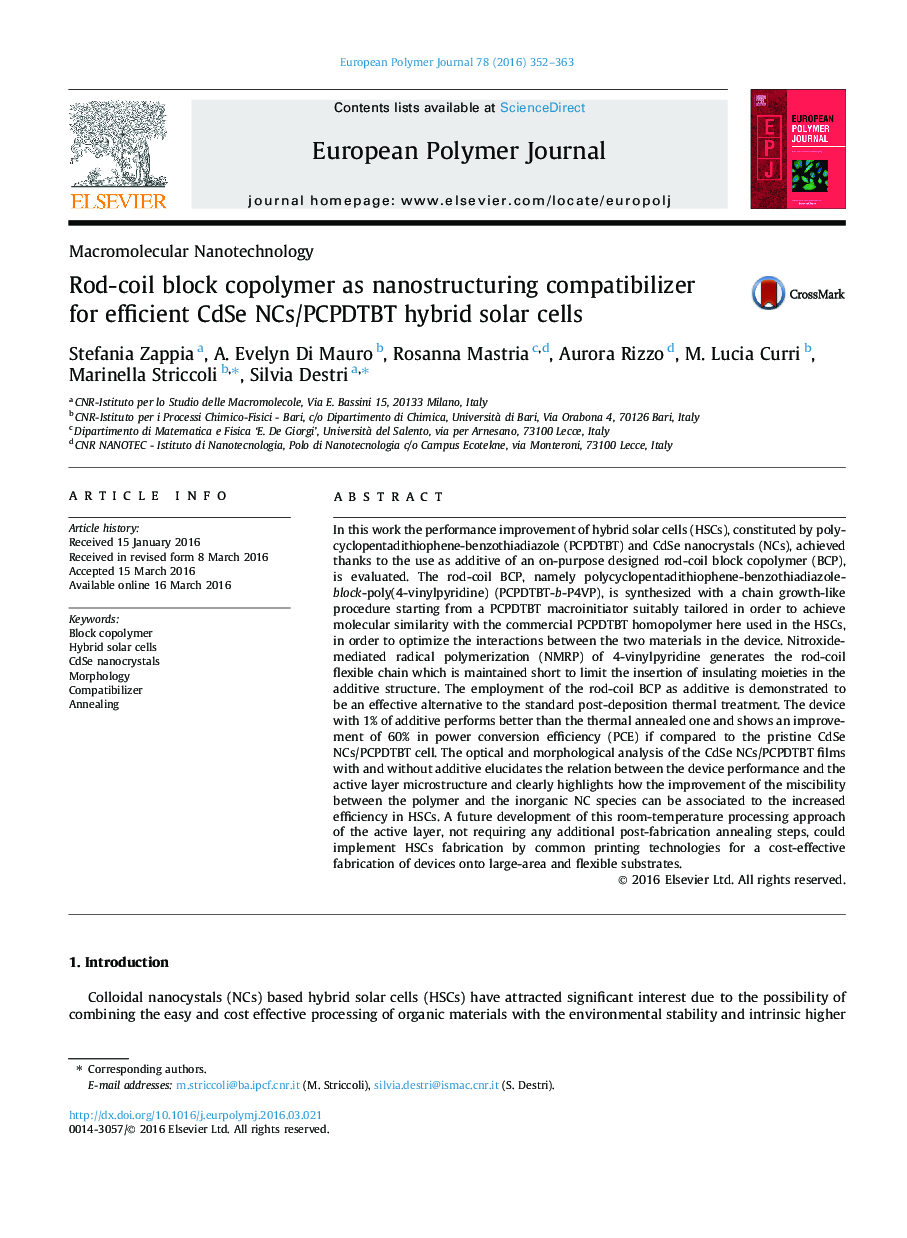| کد مقاله | کد نشریه | سال انتشار | مقاله انگلیسی | نسخه تمام متن |
|---|---|---|---|---|
| 1394647 | 1501357 | 2016 | 12 صفحه PDF | دانلود رایگان |

• PCPDTBT/CdSe NCrystal solar cell fabrication without need of post deposition treatments.
• Neither annealing process nor toxic dithiol use is necessary.
• Low band-gap block copolymer is used as nanostructuring additive of the active layer.
• Morphology modification beneficial for charge transport to electrodes.
• Design, synthesis, and characterization of a new low band-gap block copolymer.
In this work the performance improvement of hybrid solar cells (HSCs), constituted by polycyclopentadithiophene-benzothiadiazole (PCPDTBT) and CdSe nanocrystals (NCs), achieved thanks to the use as additive of an on-purpose designed rod-coil block copolymer (BCP), is evaluated. The rod-coil BCP, namely polycyclopentadithiophene-benzothiadiazole-block-poly(4-vinylpyridine) (PCPDTBT-b-P4VP), is synthesized with a chain growth-like procedure starting from a PCPDTBT macroinitiator suitably tailored in order to achieve molecular similarity with the commercial PCPDTBT homopolymer here used in the HSCs, in order to optimize the interactions between the two materials in the device. Nitroxide-mediated radical polymerization (NMRP) of 4-vinylpyridine generates the rod-coil flexible chain which is maintained short to limit the insertion of insulating moieties in the additive structure. The employment of the rod-coil BCP as additive is demonstrated to be an effective alternative to the standard post-deposition thermal treatment. The device with 1% of additive performs better than the thermal annealed one and shows an improvement of 60% in power conversion efficiency (PCE) if compared to the pristine CdSe NCs/PCPDTBT cell. The optical and morphological analysis of the CdSe NCs/PCPDTBT films with and without additive elucidates the relation between the device performance and the active layer microstructure and clearly highlights how the improvement of the miscibility between the polymer and the inorganic NC species can be associated to the increased efficiency in HSCs. A future development of this room-temperature processing approach of the active layer, not requiring any additional post-fabrication annealing steps, could implement HSCs fabrication by common printing technologies for a cost-effective fabrication of devices onto large-area and flexible substrates.
Figure optionsDownload as PowerPoint slide
Journal: European Polymer Journal - Volume 78, May 2016, Pages 352–363